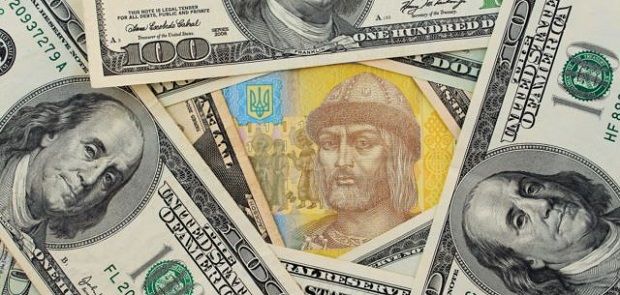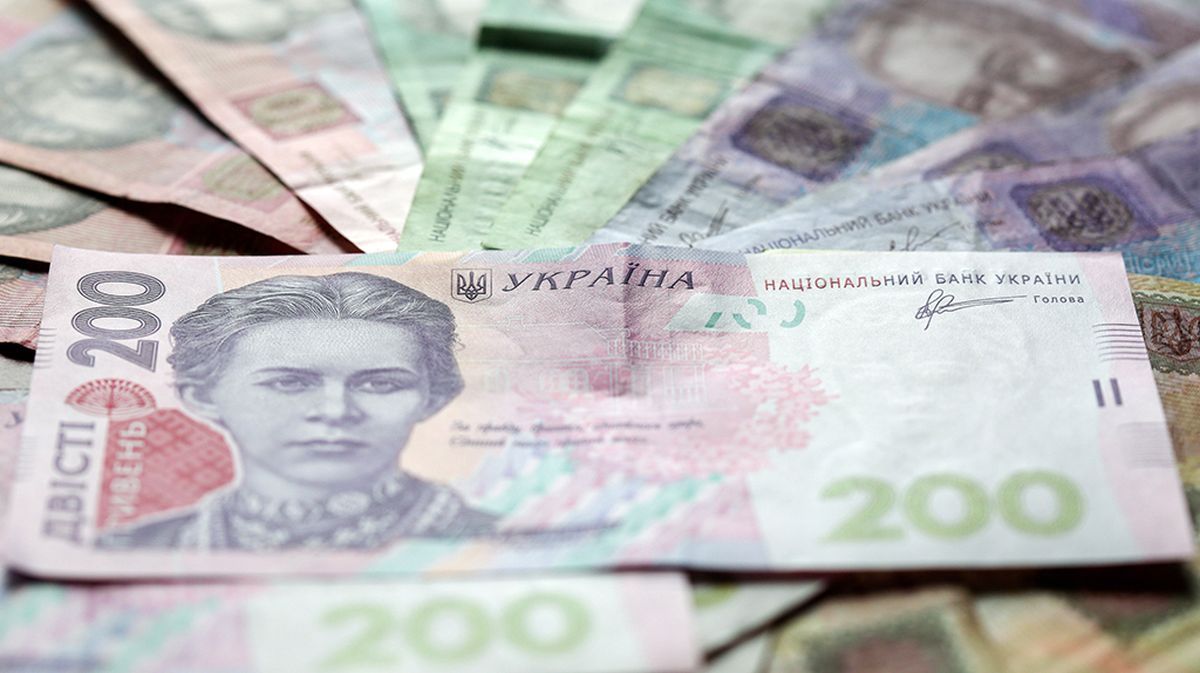
Waiting for blessed lending rain
The Ukrainian banks, weakened by the crisis, are still reluctant to lend to the business due to the huge amount of bad debts. Most companies are neither willing to borrow at market rates. Will the real sector receive access to funding sources it in the coming months?
After the acute crisis of 2014-2015, Ukraine's economy is gradually returning to growth. But it is impossible to put the domestic locomotive on rails in the absence of reliable funding. The investors do not rush to invest in the Ukrainian business, and there are many reasons for that, including the ongoing war between Russia and Ukraine.
Domestic lending, despite the gradual recovery in the banking system, is not working yet. In the first half of 2016 alone, the volume of lending to legal entities decreased by 5% in hryvnia equivalent, while it’s the foreign currency loans that prevail in the portfolios of the already issued loans.
Ukrainian banks predict a further reduction in corporate lending in the next 12 months. These data were made public by the National Bank on the results of its survey of 66 banks, which account for 96% of the banking system’s assets.
Meanwhile, for a long period of time, the Ukrainian banking system has had excess liquidity volume between UAH 60 billion and UAH 100 billion. But the banks are in no hurry to give money to businesses, despite the fact that major customers have always been the most interesting ones because of the high profit and low operating costs.
Bankers are cautious

Ukrainian banks are in no hurry to allocate funds for long-term loans due to a number of reasons, including the low level of creditor protection, the risks of solvency of borrowers, a significant amount of bad loans, and imperfection of the judiciary.
According to official data of the NBU, the share of adversely classified assets, on the results of the stress testing of banks, is 53% of the loan portfolio of Ukrainian banks.
At the same time, due to the fact that banks have stopped lending, while the "good" loans are gradually paid off, the loan portfolio is reduced, and this trend is continuing. It is difficult for the banks to increase the volume of loans with a load of accumulated bad debts.
The law on financial restructuring, which regulates the procedure for reassembly the structure of debt of the long-running businesses to the banks, is designed to eliminate this imbalance. It will come into force from October 19 and it will launch the mechanism of a voluntary financial restructuring of the debtor enterprises. If the idea of the NBU and the Ministry of Finance works out, it will help restore the solvency of enterprises and preserve jobs. The mechanism is designed to perform a miracle – to reduce the number of bad loans and, as a result, reduce the number of reserves for bad loans and free the money for lending. Experts estimate the total amount of the debt of companies that fall under the mechanism stipulated by the law at some UAH 200 billion.
In addition, the National Bank has enhanced the approach to the assessment of expected losses by banks on credit risk and set clear and detailed rules and general principles of credit risk forecasts.
"The introduction of the new provision will make almost impossible the practice of banks giving loans to the financially insolvent enterprises and the acquisition of securities from low-quality issuers, which has been common practice in the past," said the regulator.
The new rules will be applied in the test mode from September 1, 2016 and will become mandatory from January 3, 2017. But bankers already see in them some of the barriers to lending to the large businesses. For example, when obtaining a loan, the client will have to provide consolidated reporting and auditing. But many medium and large enterprises split the business into several small companies, so they do not have a common consolidated financial statement, which could be used to assess risks.
In addition, the above-mentioned problems will exacerbate the deficit of "healthy" borrowers, capable of servicing their loans. According to bankers, there are a lot of businessmen wanting to get a loan, but there are few real customers who can guarantee credit repayment due to an effective business model and a decent collateral.
"The conditions remain the same for everyone: to get a loan, the company must maintain a profitable activity, have a transparent ownership structure, a clear business model and a good credit history," said the head of the business customers department at UniCredit Bank, Olha Polonska.
Nothing is impossible

The bankers say they are ready to look closer into the creditworthy enterprises and organizations from the priority sectors of the country's economy.
For example, state-owned Oschadbank is ready to lend to SMBs with an annual turnover under UAH 500 million. The main priority of this bank, as well as of many private banks is the farmers and processors of agricultural products, as well as energy efficiency projects for households and businesses, and import substitution.
Alfa-Bank notes that the industry and the size of the business are among the criteria for lending. "There are industries that are restricted in lending by our credit policy, such as construction. But this does not mean that we will not lend to them. It’s just that we will analyze them more carefully and cautiously," said Tetiana Tomash, the director of the bank's corporate lending department.
According to her, when making a decision on whether to fund a certain business or not, the bank makes sure that the loan brings profit to the business after it pays it off.
UniCredit Bank is not guided with choosing any particular industry in the process of deciding on issuing a loan.
"Banks are willing to provide financing to companies from completely different spheres," Polonska said. According to her, the banks are more likely to issue loans, and on better terms, too, to their longtime customers, because they understand the specifics of their activities, and the price of risk is lower than with the new clients in this case.
Expensive money

According to the NBU, the average rate on long-term loans to the corporate sector in the national currency at the beginning of August was at 22.2%, which is lower by 1.2 percentage points than at the beginning of this year. In foreign currency, it has increased by 1.1 percentage points in the same period - to 10.1%. But are the borrowers willing to borrow at the proposed rates?
The director of a small enterprise called Svitanok (Kirovohrad region) Serhiy Zelenko believes that the bankers overestimated the loans they proposed.
"In principle, they give us, the farmers, the loans willingly," says Zelenko, who tried to take a loan for his sowing campaign in several Ukrainian banks, and four out of five banks gave him a positive response.
"It’s just that the interest rate is unbearable... With such interest rates, we would only feed the banking system and have no money left for ourselves. We are now trying to get by with their own resources," he said.
According to him, in these conditions, he can’t even think about any expansion or increase of production volumes. The farmer is positive that most of his colleagues across the country don’t resort to bank financing, either.
That is, the inflated rates lead to the unavailability of credit resources, which in turn inhibits the development of agriculture and the economy as a whole.
Banks in terms of lending are guided by the key rate of the NBU, which for 2016 has been reduced four times and now stands at 15.5% compared with 22% at the beginning of the year. However, the rate is too high for the business. After all, banks can place liquidity by buying highly reliable certificates of deposit of the central bank at the key rate. And given that the discount rate is higher than inflation, money of the financial institutions is protected from devaluation and the risk associated with the issuance of loans.
"The businesses believe that this rate is quite high, especially when it comes to the support of domestic producers by lending to SMBs. It should be noted that the key rate of the European Central Bank is 0%. We see and appreciate the fact that the NBU continues to work on reducing the discount rate. At the same time, we can say that the desired rate for the companies-members of the Association for the hryvnia loans is 10%," says Hanna Derevyanko, the director of the European Business Association, summing up the opinion of the association’s members.
Consistent reduction of the key rate reduces the cost of credit resources for businesses, but the banks are also laying in the cost of credit a price of risk, so the interest rates on loans remain unaffordable for the businesses.
A full-scale resumption of lending is also prevented with the fact that some unscrupulous borrowers are constantly looking for ways to default on loans, resorting to mechanisms of bankruptcy, seeking unlawful court decisions in their favor. One of the major steps to solve this problem may be the adoption by Parliament of the draft law on the restoration of confidence between borrowers and lenders. The document should address the gaps in the Ukrainian legislation, which fraudster debtors converted into semi-legal schemes of non-repayment of debts to creditors.
Therefore, the resumption of lending and reducing interest rates on loans will largely depend on the Verkhovna Rada, which this fall should adopt the necessary laws to protect creditors and eliminate loopholes in the judicial system. In addition, for the resumption of lending, further decrease of the NBU’s key rate is needed, as well as further easing of monetary policy, which is possible in case of macro-stabilization and decline of the inflation. But given the reluctance of the MPs in voting for the economic bills, as well as current forecasts for inflation, this process may take several years.
Ksenia Obukhovska (UNIAN)

